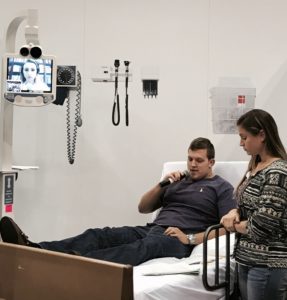Last week, I attended the American Telemedicine Association‘s 2017 conference in Orlando to find out what’s new in telehealth and how it’s impacting patient care. Here is what you need to know about telehealth in 2017:
- Endless uses for telehealth: When most people think of telehealth, they think about a patient with a cold calling a physician virtually from their home. While this is still accurate, there are many more applications for telehealth today, including:
- 24/7 monitoring of patient behaviors and vital signs in various settings, including intensive care units and assisted living facilities.
- In-ambulance virtual physician interaction and vital health data transmission to the emergency room before the ambulance arrives.
- Physician-to-virtual-physician collaboration within the hospital setting.
- Physician access by school nurses, which allows students to stay in school rather
than being sent home.
- Expanding access to health care: Telehealth is quality health care when, where and how patients prefer it. Telehealth does not replace in-person office visits, but is an important part of the continuum of care for patients – in some cases helping local physicians treat patients more effectively. In fact, 71 percent of providers have now implemented telehealth solutions or services.

In-hospital telehealth simulation during ATA2017. Patients in rural areas no longer have to travel long distances to be seen by specialists, including neurologists and cardiologists. They can access care virtually, which leads to faster diagnosis and treatment planning, and higher quality care, often at a lower cost.
- Crowded marketplace: As more applications for telehealth emerge, the landscape is becoming increasingly competitive. In 2016, the market was valued at $2.78 billion, and it’s projected to grow at a compound annual growth rate of 27.5 percent through 2021. This expansion means that telehealth companies will need to find ways to break through the clutter and differentiate their brands.
Already, there is a massive amount of overlap in services provided by telehealth companies. While consolidation is likely over time, right now marketers in the telehealth space should make sure they clearly understand their audience, and have defined ways to articulate their unique value proposition. Whether you’re a telehealth technology or services provider, or a healthcare provider offering telehealth services to patients, break through the noise by communicating clearly and consistently, and creating user-friendly content.
Have you experienced telehealth services personally? Or, if you are a provider, have telehealth solutions been implemented in your hospitals? Tell me about your experiences in the comments!
